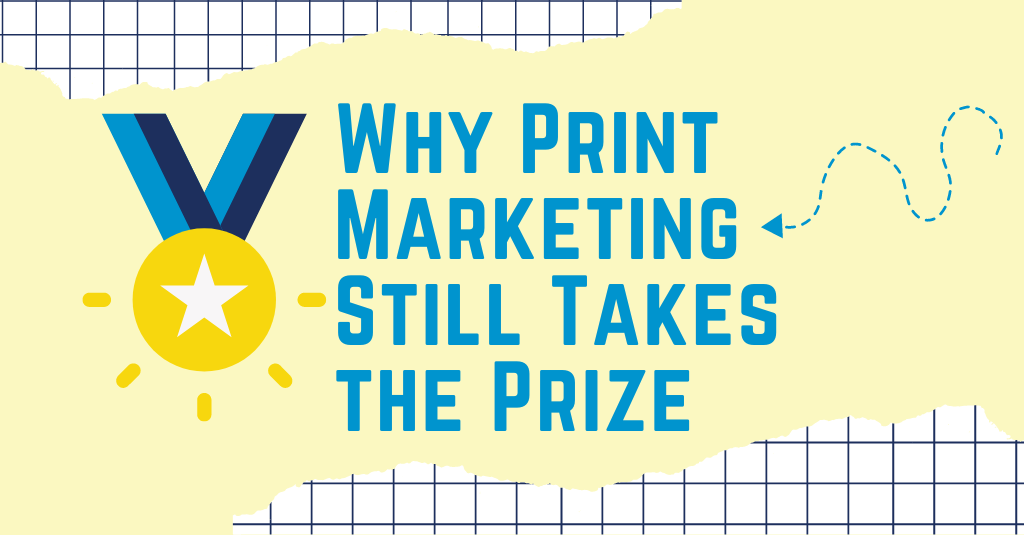Why Print Marketing Still Takes the Prize

Today’s marketing milieu is full of incredible new digital technologies – and yet, print remains the favored channel for many brands. As it turns out, there’s plenty of scientific research proving just how powerful print still is. There are plenty of upsides to digital media, of course, but when it comes to creating a long-lasting, easily-remembered message, you can’t beat print, for several reasons:
- Print typically produces stronger recall and emotional connection, in part due to its multisensory approach. Unlike digital media, print engages more senses and can be a tactile experience, which has been proven to create deeper senses of connection and memory.
- Reading on a printed page (rather than on a digital screen) increases reading comprehension. For marketers, this means audiences get a better understanding of the brand’s messaging and are more likely to be persuaded into action.
- Print has reduced cognitive load, meaning it’s easier to focus on. Instead of being distracted by multiple elements on a digital screen, print readers can pay attention to just one item and one message, leading to better focus and recall.
The Scientific Proof for Print
Print marketing is backed up by more than just anecdotal evidence. Multiple studies have analyzed the effects of print and digital media, memory, comprehension, and more.
A 2023 study published in the journal PLosOne found that the act of reading from a screen leads to greater cognitive load and lower attention than reading physical print. Taking a neurobiological approach to understanding these gaps, the study measured brain activity in certain regions of the brain during both screen and print reading. After comparison, print was found to be better at activating higher-level frequency brain activity, which in turn is connected to greater attention, recall, and focus.
Another study from the University of Valencia looked at reading comprehension by comparing print and digital leisure reading habits. This study found very little relationship between reading comprehension and digital reading, but a significant and distinctly positive relationship between comprehension and physical print reading. The researchers actually discovered that print readers may have six to eight times higher comprehension levels than those who read for the same amount of time using digital devices.
These correlations have been explored for years. A 2014 study from the Victoria University of Wellington in New Zealand found that increased digital use for reading led to an increased amount of reading on a broad level, but it came with a cost. More digital reading – as opposed to print – also led to changes in patience levels, increased skimming and multitasking, higher distraction, and more eye strain.
In today’s fast-paced and content-filled world, smart marketers understand that the combination of print and digital can enhance both beyond what they’re capable of separately. Technology solutions such as augmented reality, personalized URLs, QR codes, and more can blend the impressive impact of digital with creative, tactile print experiences. It’s the best of both, bringing together digital communications’ ability to personalize and get audiences engaged with print’s knack for building emotional connections and memories.
At Standard Press, we understand the unique strengths of both print and digital – and how to combine them to make a truly memorable brand experience. Our creative thinking, collaborative approach, and wide range of experts and resources mean you’ll always have what you need to build a better brand. Whatever you need – we got it!
Share
